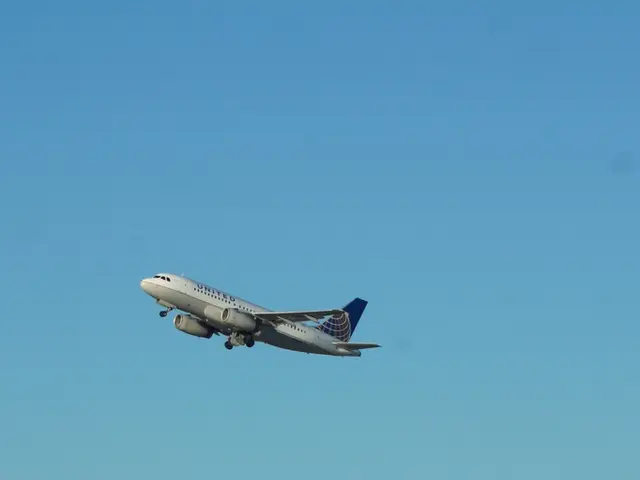Revamped Departure Strategies at Frankfurt Airport - Flying over the Taunus Mountains
Frankfurt Airport Expands Number of Departures Toward Taunus Region - Frankfurt Airports Intends to Increase Aerial Traffic above the Taunus Region
In response to the anticipated growth in flight movements at Germany’s busiest airport, Frankfurt Airport, Fraport and the German Air Traffic Control (DFS) are unveiling an updated operational concept that will prioritize more departures over the Taunus mountains, improving safety and sustainability. Here’s the lowdown on what’s in store:
Adjusted Flight Paths
- Westbound Flights: Almost 70% of take-offs and landings at the airport involve westbound departures. With the updated plan, these flights will increasingly use northwest-facing departure routes after take-off from the center runway, urgently addressing potential safety challenges associated with previous routes and improving overall air traffic management [1][3].
- Curbing the Southern Flyway: The “southern flyover” route, which passes over urban areas like Mainz and Wiesbaden, will now see less air traffic. This adjustment is part of a broader plan to minimize noise impacts on nearby communities and ensure safe operations [1].
Runway Optimization
- Dynamic Runway Control: The revised operational concept allows for more flexible runway management during peak periods. By increasingly utilizing northwest departure routes from the center runway, the airport can comfortably manage increasing traffic volumes [3].
- Runway Dependencies: Conflicts between controlling the west and center runways have been addressed by optimizing departure routes to minimize these clashes [1].
Concerns among Surrounding Communities
- Noise Impact Analysis: Although the changes are intended to reduce noise impacts by shifting flight paths, communities like Hochheim near the airport are expressing concerns about the impact on noise levels [2]. Fraport and DFS acknowledge this and have initiated discussions with nearby municipalities and the general public.
Sustainable Aviation Future
- Exchanging the Old for the New: The refined operational concept paves the way for safe, stable, and sustainable operations in the future. As the airport prepares for traffic growth, this plan forms the foundation for redefining noise abatement zones [3].
- Iterative Improvements: The implementation of this plan is ongoing, and continuous fine-tuning is essential for the airport to adapt to expanding traffic demands while mitigating environmental impacts [1][3].
[1] - Deutsche Welle (2021, October 06). Frankfurt airport to change takeoff routes to avoid air traffic collisions. Retrieved from link[2] - Tagesspiegel Plus (2021, October 07). Frankfurt Airport's new operating concept sparks controversy. Retrieved from link[3] - Frankfurt Airport (2021). Frankfurt Airport Operating Concept. Retrieved from link
- The Commission has also examined the compatibility of the aid given to the aviation, automotive, public-transit, and transportation industries with the internal market, ensuring that the financial support does not distort competition within these sectors.
- In order to attract more investors in the finance sector, the government has proposed a comprehensive review of the regulations governing the automotive, aviation, and public-transit sectors, focusing on their contributions to job creation, industry growth, and environmental sustainability.
- As the industry evolves and transitions towards greener and more efficient forms of transportation, the Commission has also issued guidelines to ensure that the public-transit, aviation, automotive, and transportation sectors comply with the European Union's environmental regulations, minimizing their impact on the internal market and promoting sustainable practices.








